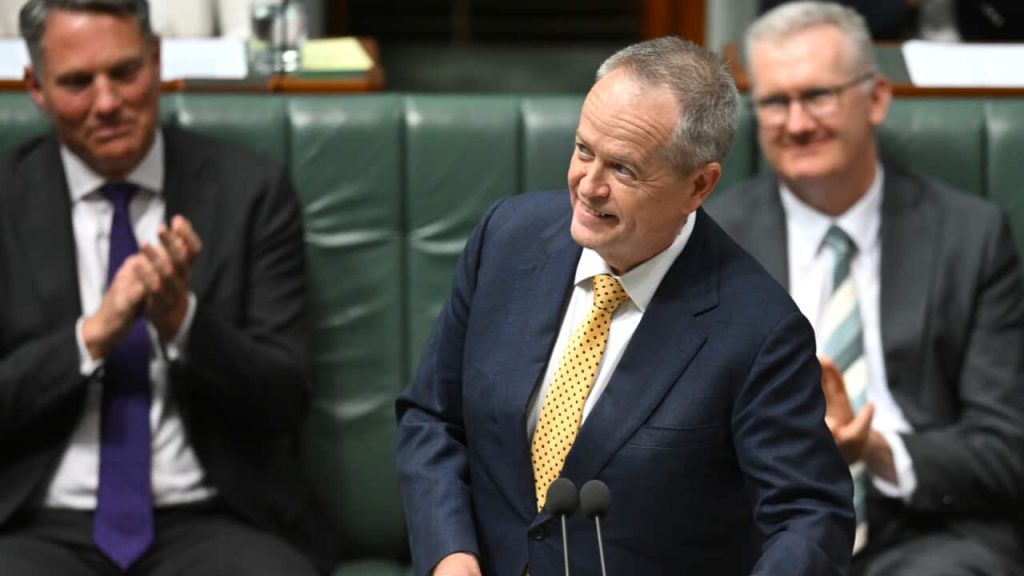Bill Shorten Bids Farewell: A Reflection on His Political Career
In a bittersweet moment, NDIS and Government Services Minister Bill Shorten delivered his final speech after 17 years in politics, leaving behind a legacy of both successes and failures. As he thanked his family and staff members, Shorten reminisced about his time in parliament, sharing heartfelt reflections on his journey.
A Humorous Farewell Speech
Shorten’s farewell speech was filled with humorous anecdotes that elicited laughter from the gallery, including a memorable reference to a sausage sandwich incident from the 2016 election. Despite the lighthearted moments, Shorten also touched on the challenges of political life, acknowledging the tough times he faced throughout his career.
Proud Moments and Regrets
Reflecting on his career, Shorten expressed pride in his contributions to three essential institutions – the Australian Workers’ Union, the Australian Labor Party, and parliament. He emphasized that despite the ups and downs, he wouldn’t trade a single moment of his time in office.
Highlights from the Valedictory Speech
During his final words, Shorten highlighted the importance of the NDIS, a significant achievement during his tenure. As the architect of the scheme, he praised the bipartisan effort that made the NDIS a reality, emphasizing its impact on the lives of people with disabilities.
Call for Tax Reform and Constitutional Changes
Shorten used his farewell speech to call for tax reform, labeling it as unfinished business for Australia. He advocated for a fairer tax system that eases the burden on young people and addresses property and income taxation disparities. Additionally, he expressed hope for constitutional changes, particularly in recognizing Indigenous Australians and advancing treaty discussions.
What’s Next for Bill Shorten?
Looking ahead, Shorten announced his plans to become the vice-chancellor of the University of Canberra, a role that allows him to support and inspire young minds. Excited about the opportunity to give back to the community, Shorten is eager to continue his work in the national interest and contribute to the city of Canberra.
In conclusion, Bill Shorten’s farewell speech was a poignant reminder of his dedication to public service and his commitment to making a difference. As he embarks on a new chapter in academia, his legacy in politics will continue to resonate with those he served. Title: The Rise of Sustainable Investing: A New Era for Financial Markets
Introduction:
In recent years, sustainable investing has gained significant traction in the financial markets. Investors are increasingly prioritizing environmental, social, and governance (ESG) factors in their investment decisions, leading to a shift towards more responsible and ethical investing practices. This trend not only benefits the planet and society but also presents lucrative opportunities for investors looking for long-term, sustainable returns. In this article, we will delve into the reasons behind the rise of sustainable investing, its impact on financial markets, and how individuals can align their investment portfolios with their values.
The Growth of Sustainable Investing
Sustainable investing, also known as socially responsible investing or ESG investing, has experienced exponential growth in recent years. According to the Global Sustainable Investment Alliance, global sustainable investment assets reached $35.3 trillion in 2020, representing a 15% increase from the previous year. This surge in interest can be attributed to several factors:
– Increasing awareness of environmental and social issues
– Demand for transparency and accountability from companies
– Shift in consumer preferences towards sustainable products and services
– Regulatory pressures to address climate change and social inequality
The Impact on Financial Markets
The rise of sustainable investing has had a profound impact on financial markets, reshaping the way companies operate and investors allocate capital. Some key implications include:
– Companies are being held accountable for their ESG performance, leading to improved corporate governance and sustainability practices.
– Investors are increasingly incorporating ESG factors into their investment analysis, influencing capital flows and driving demand for sustainable investments.
– Financial institutions are launching ESG-focused products and services to meet the growing demand from investors and clients.
– Stock exchanges are introducing sustainability indices and reporting standards to promote transparency and disclosure of ESG information.
How to Invest Sustainably
For investors looking to align their portfolios with their values, there are several strategies to consider:
– ESG integration: Incorporating ESG factors into traditional investment analysis to identify companies with strong sustainability practices.
– Impact investing: Investing in companies or funds that generate positive social or environmental outcomes alongside financial returns.
– Shareholder engagement: Engaging with companies on ESG issues through proxy voting and dialogue to drive positive change.
– Divestment: Avoiding investments in companies that do not meet ESG criteria or engage in controversial practices.
Conclusion:
The rise of sustainable investing represents a paradigm shift in the financial industry, with investors increasingly recognizing the importance of ESG factors in driving long-term value. By incorporating sustainability considerations into investment decisions, individuals can not only generate competitive returns but also contribute to a more sustainable and equitable future for all. As the momentum towards sustainable investing continues to grow, it is crucial for investors to stay informed and actively participate in shaping the future of finance.
FAQs:
Q: What are some examples of sustainable investing strategies?
A: Examples include ESG integration, impact investing, shareholder engagement, and divestment.
Q: How can individuals get started with sustainable investing?
A: Individuals can start by researching ESG-focused funds and companies, consulting with a financial advisor, and aligning their investment goals with their values.


